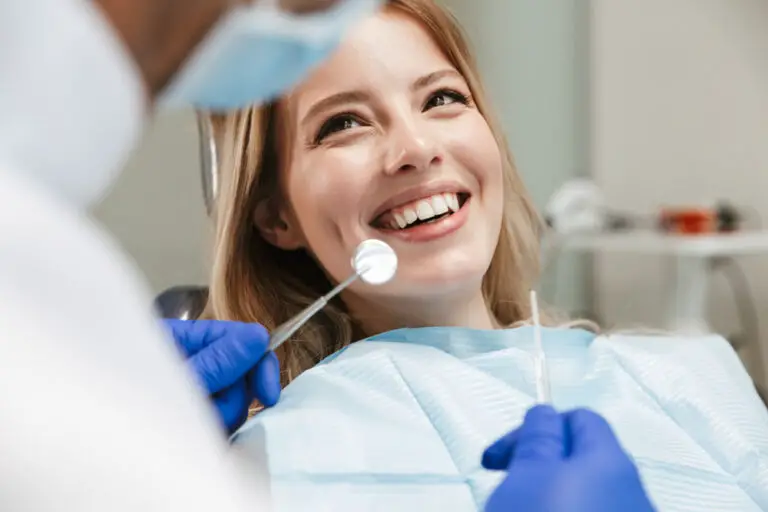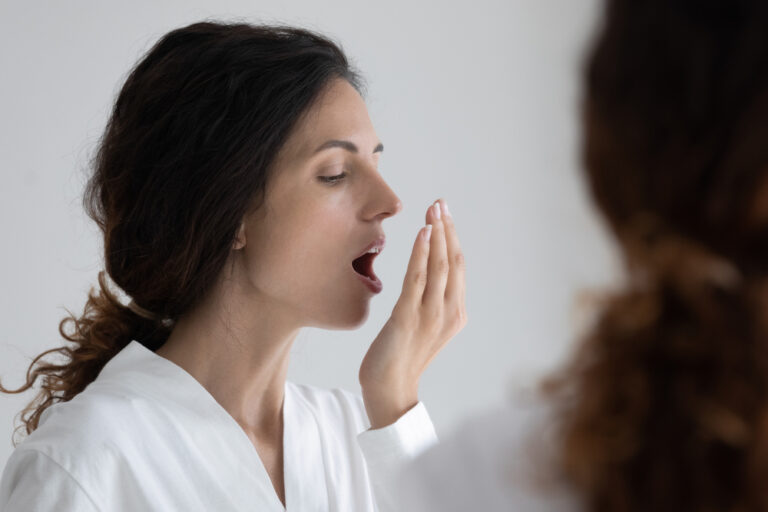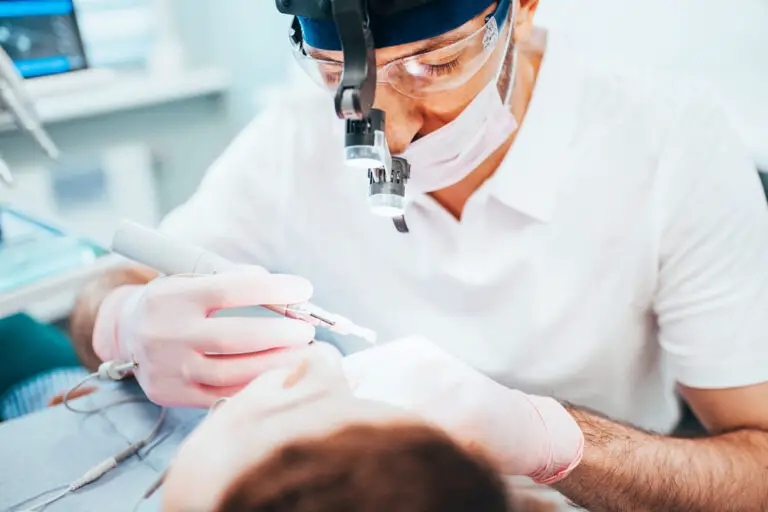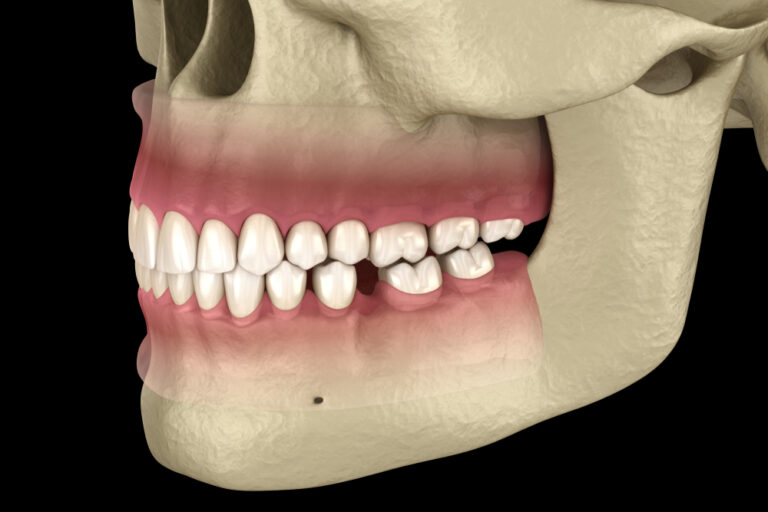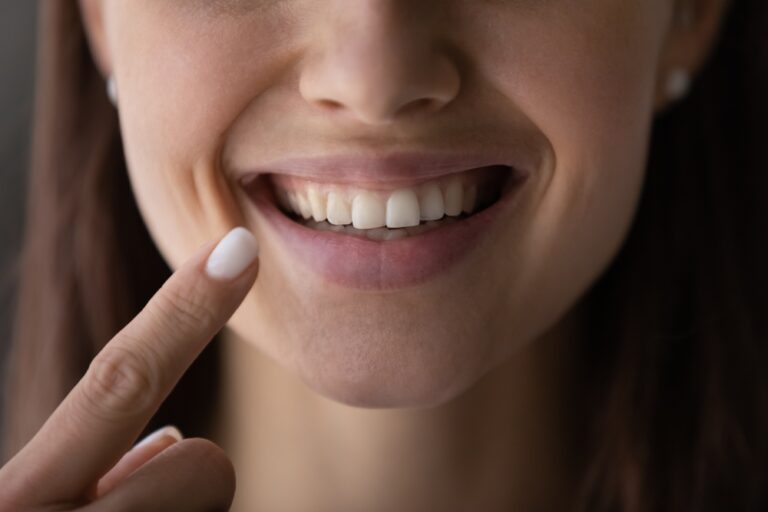You glance in the mirror and notice your once pearly-white teeth now look dull, dark, and grayish. Gray teeth can have an aging effect on your smile. But don’t worry – many things can cause your teeth color to change over time. With the right prevention and dental treatments, you can restore a whiter, healthier smile.
Tooth graying is common, especially as we get older. In fact, by age 65, about 56% of American adults have some degree of tooth darkening. Certain habits like smoking and drinking coffee/tea can worsen discoloration at any age.
While aging is the most common reason for graying teeth, other factors like genetics, porcelain restorations, medication use, and trauma can also influence tooth color. So don’t assume your graying teeth mean you haven’t taken good care of your teeth.
But severely or rapidly graying teeth can signal more serious dental problems like decay, infection, nerve damage or underlying disease. So it’s important to understand the common reasons teeth turn gray and know when to see your dentist promptly.
What causes teeth to turn gray?
There are several potential causes for teeth turning gray, including:
Enamel thinning
- Enamel is the hard, outer surface of the tooth. It is the most mineralized substance in the body and protects the softer dentin layer underneath.
- Enamel naturally wears down over time from chewing and exposure to acids in food and drink. This causes it to become thinner and more translucent.
- As enamel thins, it exposes more of the pale yellow dentin layer. This gives teeth a darker, grayish-yellow appearance.
- Enamel can thin faster due to genetic factors, acid reflux disease, acidic dietary habits, excessive teeth grinding, and improper brushing with abrasive toothpaste or bristles.
Yellowing of dentin
- Dentin is the tissue that makes up the bulk of each tooth. It lies underneath the enamel and surrounds the inner pulp chamber.
- Dentin contains less mineral content than enamel and has a pale yellow hue. This yellow color darkens over time as dentin ages and thickens.
- With thinning enamel, more yellowish dentin shows through, adding to the grayish discoloration.
Loss of shine
- Enamel has a naturally shiny, glossy appearance from light reflecting off the smooth surface.
- As enamel wears down from erosion or abrasion, it loses its luster and becomes more opaque looking. This causes teeth to appear darker and grayer.
- Polishings and dental cleanings can temporarily restore some of the enamel’s shine. But the underlying roughness remains as the enamel is worn away.
Staining
- Darkly pigmented foods and drinks like coffee, tea, cola, red wine, berries, and tomato sauce can penetrate into the microscopic pores of enamel.
- Tobacco smoke also infiltrates into the enamel and causes yellow-brown nicotine discoloration.
- Enamel becomes more porous and prone to absorbing stains as it thins with age or acid erosion. The stains then make teeth look dingy and gray.
Plaque and tartar buildup
- Plaque is a film of bacteria and food debris on teeth. When left overnight, plaque hardens into tartar, which is stained yellow or brown.
- Tartar and plaque buildup most commonly along the gumline and between teeth. This can cause yellow or gray bands or spots on teeth.
- Insufficient oral hygiene leads to excessive tartar accumulation, which gives teeth a noticeable grayish-yellow appearance.
Are gray teeth unhealthy?
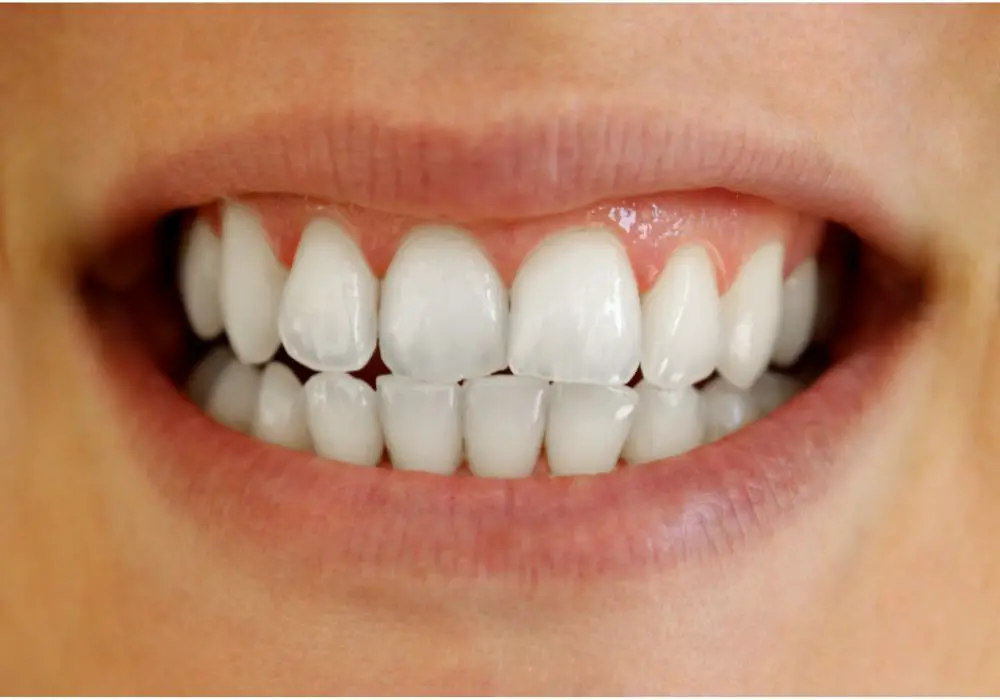 Mild graying as a part of the natural aging process is usually harmless. But extensive graying or unusual discoloration can indicate:
Mild graying as a part of the natural aging process is usually harmless. But extensive graying or unusual discoloration can indicate:
- Weak, porous enamel – raises cavity risk as decay can spread through pores into the dentin.
- Exposed dentin – dentin does not protect against decay and hot/cold sensitivities as well as enamel. More surface area exposed means more risk.
- Poor oral hygiene – plaque and calculus buildup leads to inflamed gums, bad breath, tartar-coated teeth, and eventual tooth loss and gum disease if not treated properly.
- Habits like smoking or chewing tobacco – causes brownish-gray stained teeth, bad breath, and multiplied risk for oral cancer. The longer these habits occur, the worse staining and health risks become.
So while some graying is normal with age, severely gray teeth may signal problems. It’s a good idea to have your dentist examine any unusual tooth color changes or cases of rapid graying. They can check for weakened enamel, decay, gum disease, oral cancer risks, and other issues.
When to see a dentist?
See your dentist promptly if you notice:
- Sudden gray, brown or black spots appearing on teeth – may indicate underlying decay
- Rapid worsening of grayish discoloration – could mean enamel eroding away
- Increased tooth sensitivity to hot and cold foods – signals enamel loss and exposed dentin
- Translucent or “see-through” teeth with a “halo effect” – enamel may be severely thinned or eroded through
Bring any moderate graying to your dentist’s attention, especially when accompanied by symptoms like:
- Toothaches, sensitivity or pain with sweets – potential decay
- Receding gums, exposed roots or red, inflamed gums – gum disease
- Increased sensitivity when brushing – thinning enamel
- Persistent bad breath or white tongue coating – oral hygiene needs improvement
- Metallic taste, dry mouth or mouth sores – may suggest serious problems
The dentist can perform a clinical exam, check for cavities and gum disease, take x-rays, and determine causes for graying. They may recommend further testing or treatment if any underlying conditions are discovered.
Dentist treatments for gray teeth
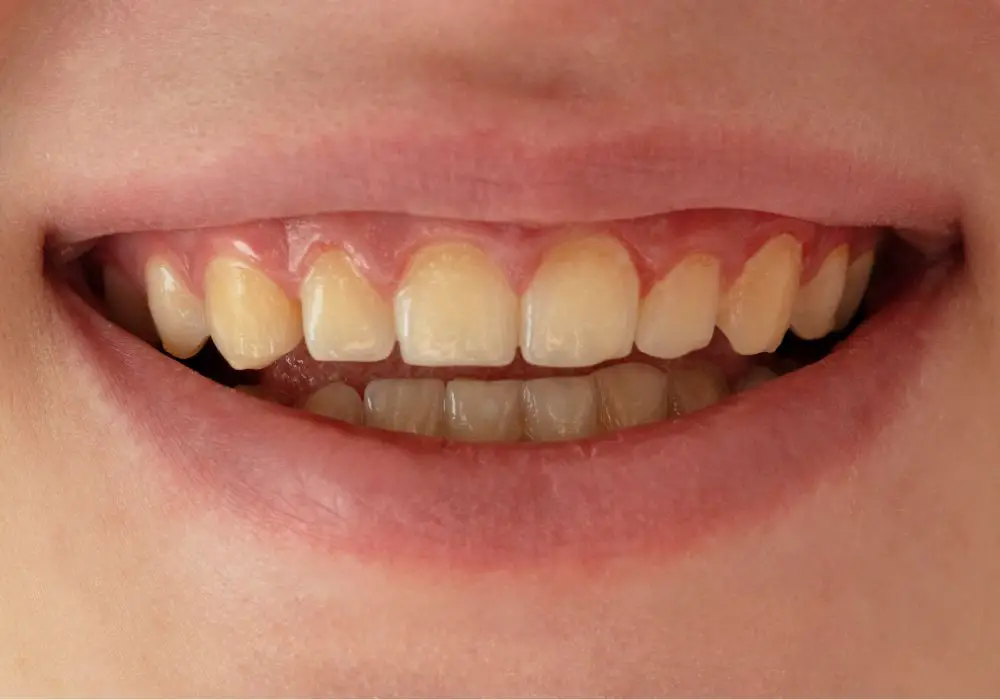
If your graying teeth are due to unhealthy causes, dental treatments can help restore strength and luster. Options may include:
Improved hygiene
- Professional dental cleanings can deeply remove hardened tartar that regular brushing misses. This instantly brightens teeth by a few shades.
- Learning proper brushing and flossing removes daily plaque that causes grayish film on teeth if allowed to remain. This improves gum health too.
- Routine dental visits and cleanings every 6 months prevent future calculus buildup that can stain and discolor teeth.
Gum disease treatment
- Deep cleanings under the gums can combat gum infection and cure periodontitis. This stops gum recession that exposes grayish tooth roots.
- Prescription antimicrobial mouth rinses reduce bacteria levels and inflammation linked to gum disease. Healthy gums stay pinker.
- Laser therapy, antibiotics or gum grafts may be needed for advanced cases of gingivitis and receding gums. Improving gum health protects teeth.
Remineralization
- Topical fluoride treatments or pastes containing calcium phosphate help deposit lost minerals back into weakened, porous enamel.
- This remineralization makes enamel harder and more resistant to acid and bacteria. It reduces sensitivity and improves appearance as well.
Tooth restoration
- Fillings, inlays, dental crowns or veneers can cover intrinsic discoloration or decayed areas that cause gray spots on teeth.
- These restorations replace lost enamel structure and give teeth a whiter, healthier appearance.
Teeth whitening
- Professional bleaching treatments in the dental office use higher peroxide concentrations to penetrate deep stains.
- Custom take-home trays from the dentist allow you to whiten using carbamide or hydrogen peroxide gels for a few hours daily. These remove both surface and internalized discoloration.
- Over-the-counter products only remove surface stains from the outer enamel layer. So they cannot change inherent tooth color. But they can brighten teeth a couple shades.
Dental bonding
- Tooth-colored resin material bonds to teeth to mask intrinsic grayish tooth discoloration. The dentist sculpts the resin into layers over the front tooth surface.
- Bonding resins can also repair chips or gaps in enamel that trap stains and worsen graying.
Seeing your dentist helps determine the most appropriate solutions for your situation. Be sure to maintain good oral hygiene habits at home and keep up with your dental visits.
Home prevention and remedies
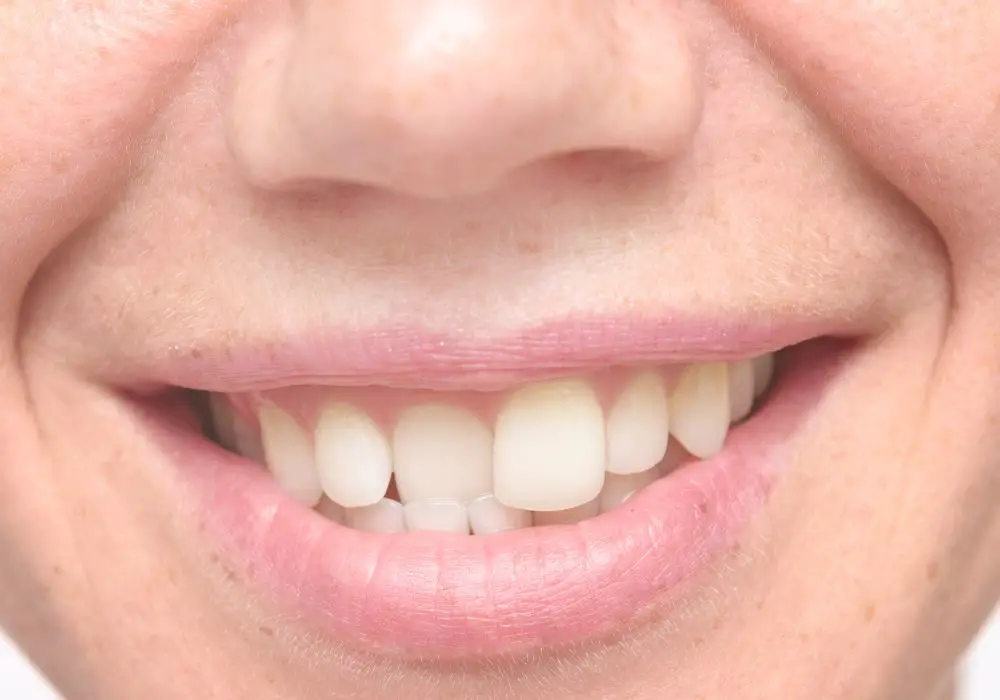
Alongside professional dental care, you can help slow graying and promote whiter teeth with:
Brush and floss thoroughly
- Brush at least twice a day for 2 minutes, paying extra attention to the gumline where tartar accumulates. Use a soft-bristled brush if you have exposed roots.
- Floss carefully once daily to remove plaque between teeth that causes discoloration.
- After meals, swish water around teeth to rinse away acids and staining residue.
Use fluoride toothpaste
- Fluoride makes enamel more resistant to decay and acids. Use toothpaste with at least 1350ppm fluoride.
- Your dentist may prescribe prescription strength 5000ppm fluoride toothpaste if you have receding gums, root exposure or increased sensitivity indicating weakened enamel.
Watch your diet
- Limit consumption of staining foods like coffee, dark sodas, tomato sauce, and blueberries which can worsen graying over time.
- Avoid excessively acidic foods that erode enamel like citrus fruits, vinegar, pickles, and carbonated soft drinks.
- Drink water with meals to neutralize acids and help rinse teeth clean.
Hydrate with water
- Drink at least 8 glasses of plain water daily to promote saliva flow. Saliva helps buffer acids and wash away staining particles on teeth.
Quit smoking
- Tobacco causes severe brownish-gray discoloration of teeth and multiplying your risk of oral cancer, gum disease, tooth loss and other health problems. Quitting greatly benefits your oral and overall health.
Use teeth whitening products
- Whitening toothpastes and over-the-counter gels or strips may lighten teeth a shade or two by removing surface stains – consult your dentist first if enamel is thin.
- Avoid charcoal or abrasive whiteners that may scratch enamel. See best results from professional whitening instead.
Try oil pulling
- Swishing a tablespoon of coconut or sesame oil for 15-20 minutes may help pull toxins from teeth and promote subtle whitening over time. But scientific evidence is limited.
See your dentist first before trying home remedies, especially if enamel is already thin. Proper oral care and dental treatment are most effective for improving the health and appearance of graying teeth.
Frequently Asked Questions
What is the most common cause of graying teeth?
The most common cause of graying teeth is thinning of the enamel as we age, which exposes more yellowish dentin underneath and causes teeth to appear more grayish-yellow. Staining from foods, drinks and tobacco can also accumulate in enamel over time, compounding the grayed effect.
At what age do teeth normally start turning gray?
It’s common for teeth to begin graying in your 40s and 50s as enamel naturally wears down with age. But some people experience early graying in their 20s or 30s due to habits like smoking, heavy coffee/tea drinking, or acidic dietary habits that damage enamel sooner.
Can you reverse graying teeth?
While you can’t permanently reverse the natural aging process, you can temporarily restore shine and lighten grayed teeth several shades through methods like hygiene cleanings, teeth whitening treatments, andproducts that help remineralize enamel. Using bonding resins can also mask intrinsic discoloration.
What does it mean if a tooth turns gray suddenly?
A sudden change to gray over a short period could indicate tooth decay, infection, nerve damage, or trauma. Cracked teeth can also rapidly trap stains and turn gray. See your dentist immediately if a tooth changes color quickly to determine the cause and treatment needed.
Do gray teeth mean you have poor oral hygiene?
Not always – some graying with age is normal. But heavy tartar buildup, yellowed plaque stains, receded gums, and severe staining can signal poor daily hygiene. Improving your oral care routine helps prevent unhealthy graying and promotes whiter teeth. Your dentist can advise specific steps.

